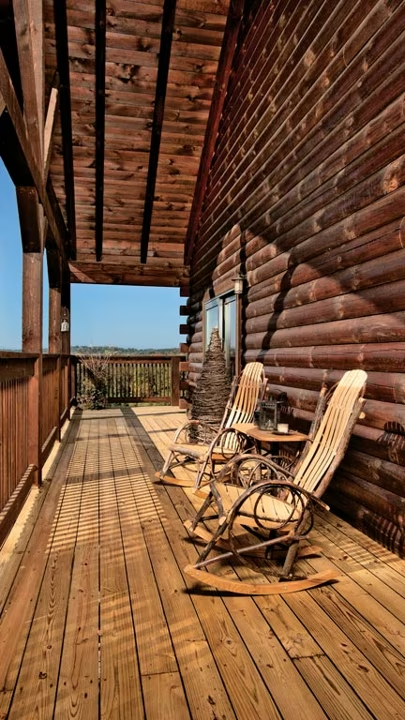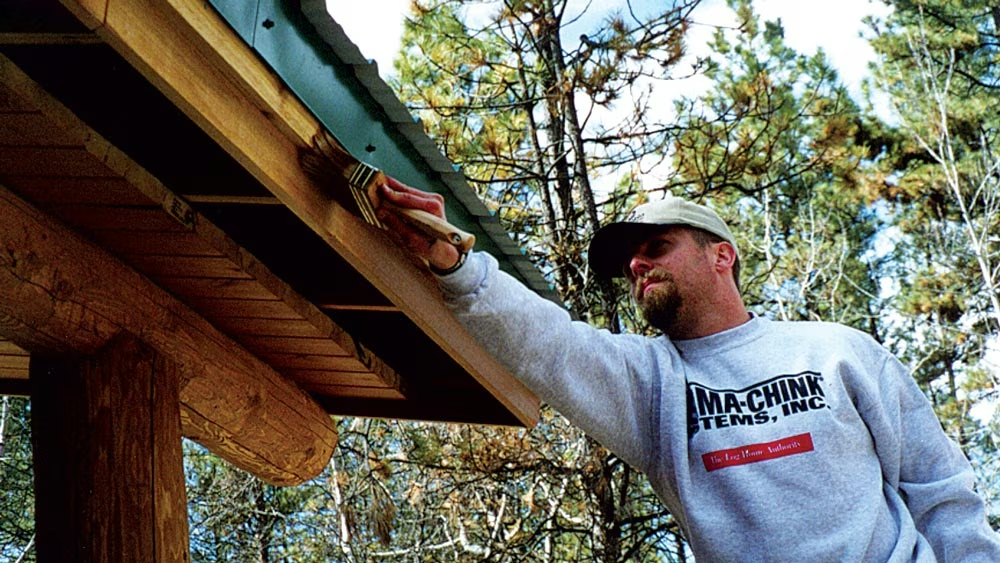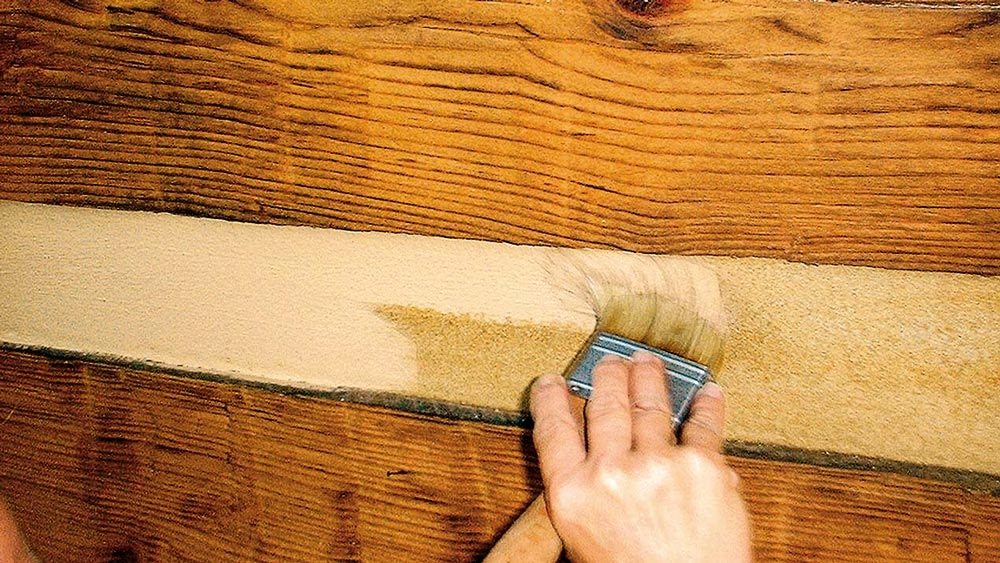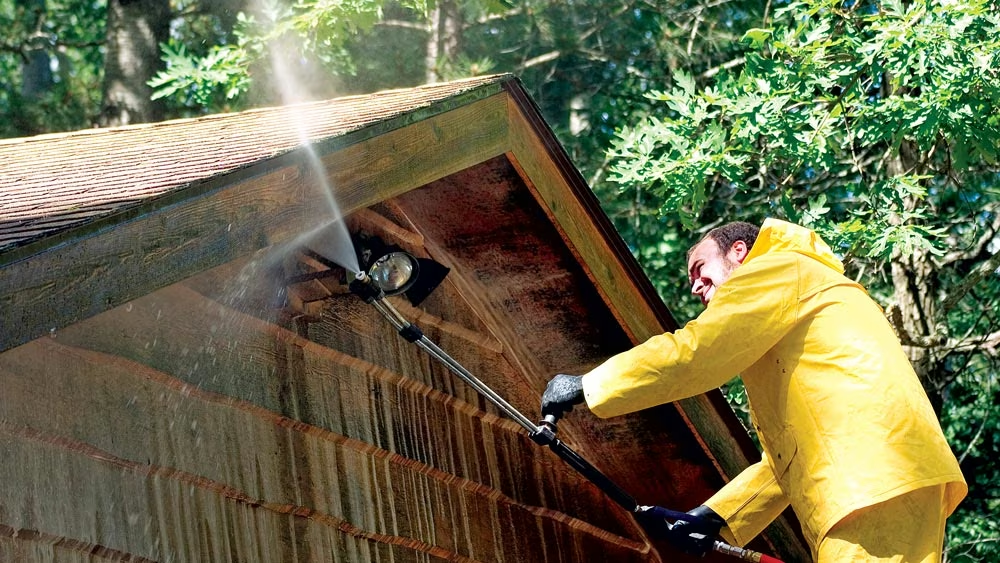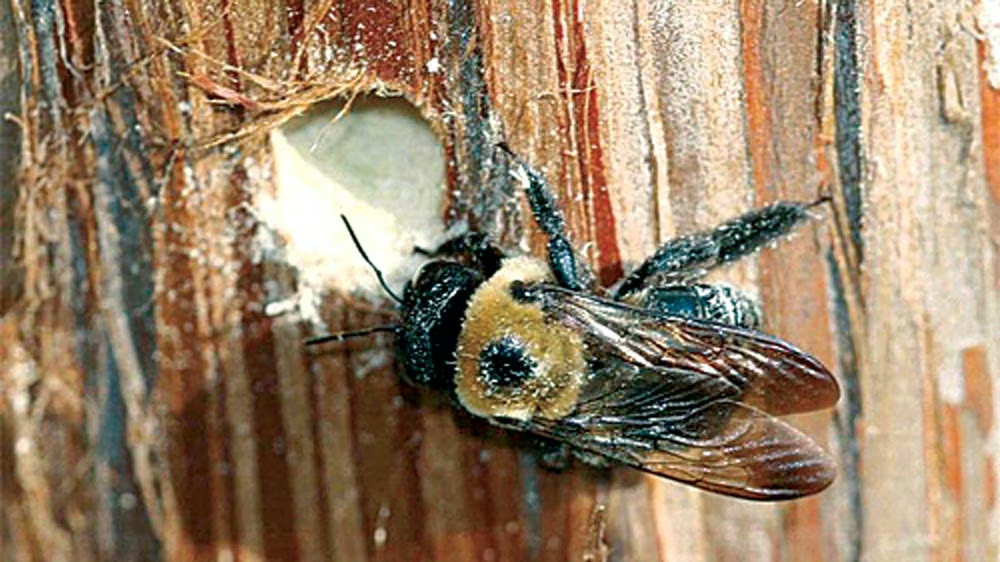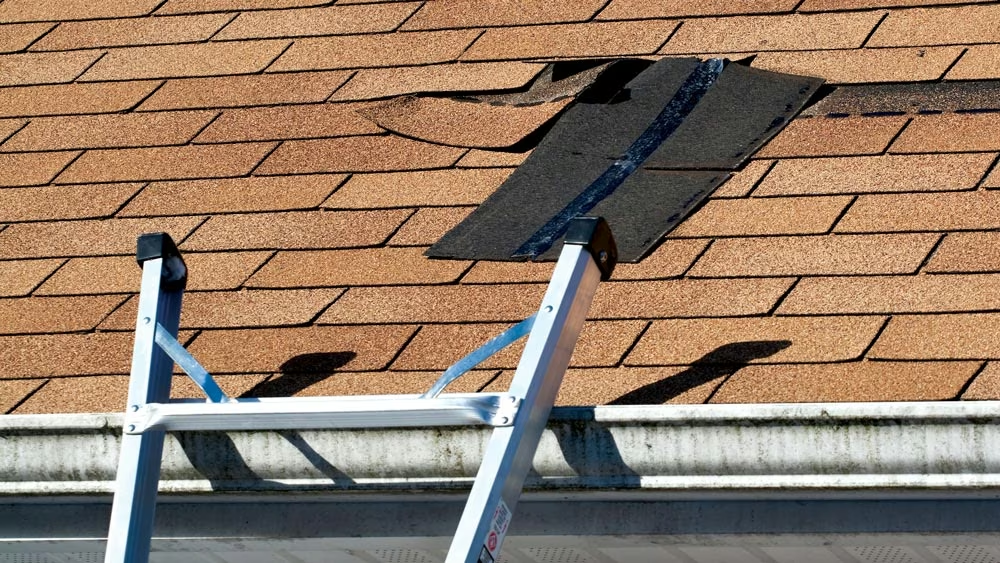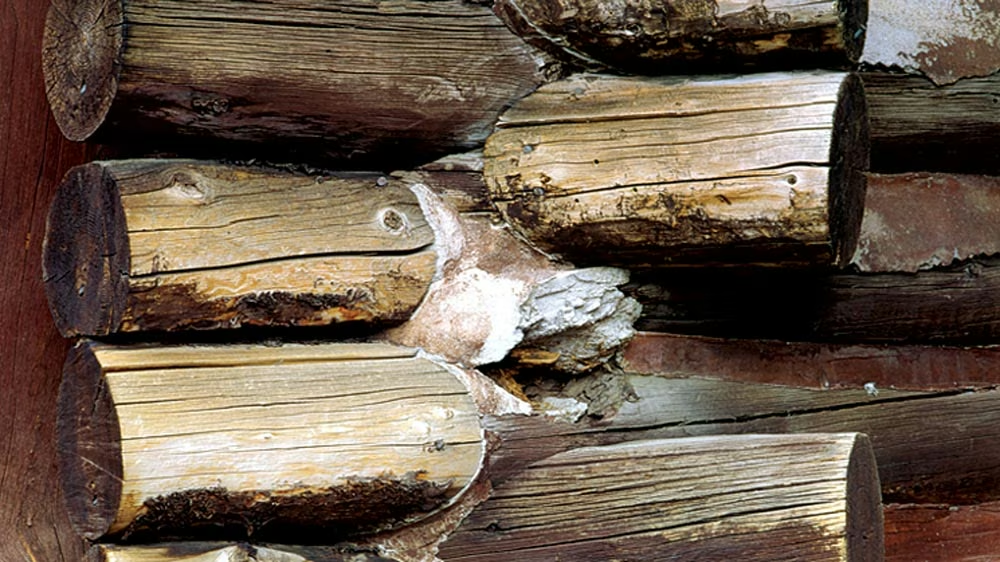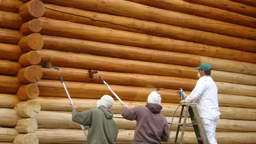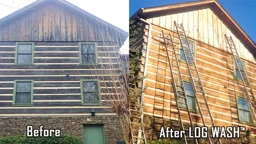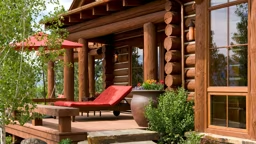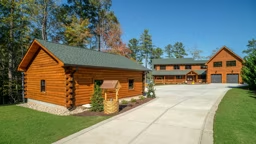
Regular seasonal pressure-washing after pollen season has passed will help keep dirt and debris off of your log walls, helping prevent the mold growth, which could eventually lead to rot.
We thought we knew all we needed to know when my family moved into our new log home. But, over the years, we began to realize how much we had to learn — especially when it came to some surprising potential trouble spots. Here’s the inside scoop on what we learned to help you get ahead of the curve on long-term log home maintenance and help your home age well over time.
Settling
Our logs were kiln-dried, so most settling (an inch and a half) took place during construction, with another half-inch during the first year. Our home was designed with jacks under center posts that were supposed to be lowered to correspond with exterior wall settling. In practice, this proved difficult to judge, resulting in minor unevenness throughout the structure. Our builder allowed for about an inch of crushing space at the top of the interior drywall. We found that the Sheetrock has crunched a bit under each second-floor joist and on the room corners closest to the center of the house, while the walls parallel to the floor joists did not crush at all. We did have a few tongue-and-groove ceiling boards pop slightly out of place, though they were too high to warrant fixing.
Stain Color
Our initial stain required a three-part application, and I was disappointed to see that every new coat of stain made the walls darker. Twelve years and five coats later, our golden-brown walls now look dark brown. If I had known how the color would darken over time, I would have started with a lighter shade.
Railings
Although our manufacturer warned us that the exterior railing system might have to be replaced in a couple of years, we are still on the original railings. The first thing we discovered was that caulking the bottom of the spindles (as recommended) only trapped water inside. So we tore out all the caulk and drilled holes for the water to escape. The deck railings take a beating and needed to be stripped down to the bare wood after five years, but that’s better than replacing them.
Exterior Caulking
Filling large checks and caulking between log courses was a big and messy job, but we are glad we did it. The caulk between courses has held perfectly, but in the largest checks it pulled away from the edges and needed to be removed and filled in again after a few years. I don’t think the checks got any larger; we were just inexperienced. Gale-force rainstorms showed us the value of our work and taught us that corners are the most vulnerable spots.
Fascia Boards
These are the boards applied under the edge of the roofline, facing out. Many magazines show fascia two or three boards thick, giving a kind of stepped look, but our builder used only one pine board, which we painted. This fascia has warped, faded and required many coats of paint. A second board layer would have covered many of the seams, and perhaps the top layer could have been more firmly nailed in place.
Thermal Windows
All window manufacturers are not created equal, so do your homework. We had very bad luck with our thermal windows and have had to replace six large panels so far, with five more windows starting to cloud up. We’ve had the most difficult time with oversized (6-foot-tall) casements and concluded, for the most part, that the larger the window, the quicker it loses its seal. I was told (after the fact) that a super-sized window may sag under its own weight and break the thermal seal. Had I known this, I would have used smaller, divided windows instead of grand monsters, which are difficult to clean anyway.
Many other things are starting to come to the end of their useful life: water heater, smoke detectors, even the clothes dryer. But our trusty log home is just beginning to prove itself and promises to keep us safe and cozy as we age together.
What Can Go Wrong?
We all benefit from regular physical exams and a little TLC as we grow older. Your log home is no different. Here are four issues that may arise as your home ages.
CRACKED CHINKING
Old-timey chinking needed constant patching. Today’s products last much longer but may still give out over time. Repair any breaches immediately to prevent further damage and keep your home weathertight.
FADED STAIN
Exposure to the weather, especially sunlight, eventually wears away even the strongest stain. Keeping your logs clean will help prolong the life of your finish.
ROTTED CAULKING
Close inspection is necessary to spot where beads between logs have succumbed to the effects of time. Repair immediately to avoid log degradation, as well as keep your home airtight and prevent critters from sneaking in.
WOODPECKER DAMAGE
If you build your home in the woods and insects find their way into your logs, hungry birds may follow. Choose a stain with insecticide and tell the pests to bug off.
See also: Maintenance to Do Now to Save You Time Down the Road




